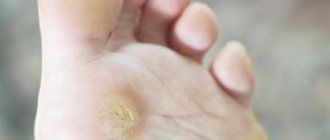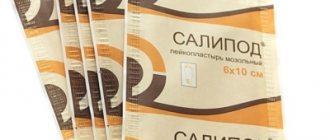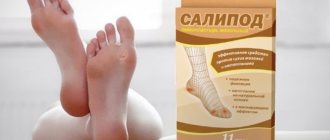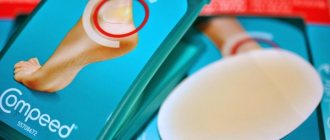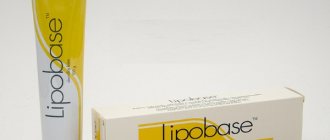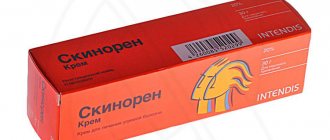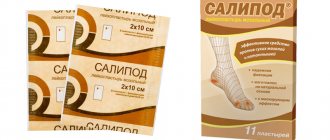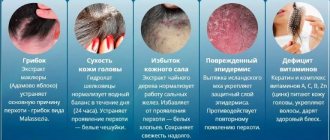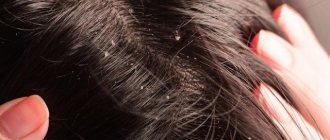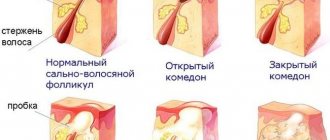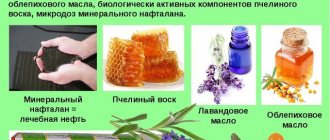Many people know what calluses are. Uncomfortable or tight shoes can chafe your feet, causing painful blisters. When such exposure continues for a long time, the skin becomes coarser and thickens. Dry calluses form, which grow deep into the soft tissues, forming something like a root or rod. For this they received the name core. Such formations are very difficult to remove, and they often cause very severe pain when walking. There are many medications available for this purpose, but not all of them are effective. The most popular remedy is the Salipod patch for core calluses. Reviews of the application note that with its help you can easily get rid of even old hard formations.
What are core calluses?
A special feature of this type of callus is a core deeply embedded in the soft tissue. Therefore, it is very difficult to remove them. Using conventional methods, only the upper part of the callus is softened, and the root is not affected.
A callus appears due to prolonged exposure to one area of the skin of any irritants. Most often these are uncomfortable shoes. Therefore, such calluses appear mainly on the soles of the feet, most often on protruding places, in the area of contact with shoes or between the toes. They can form in athletes, in people who are overweight or who spend a long time on their feet.
If the shoe compresses the foot in some place or rubs the skin, abrasion may form. The resulting thickening of the epidermis protects deeper tissues from irritation. A layer of hardened cells gradually grows, most often inward. It is because of this feature that pain occurs when pressing on the growth or when walking.
Such dry calluses are often a symptom of various foot pathologies. Flat feet, hallux valgus, or plantar fasciitis lead to improper load distribution on the foot, resulting in dry calluses and corns. It is very difficult to remove them, since the coarsened layer of epidermal cells goes deep inside.
Features of the Salipod patch
This product is intended to combat various types of keratoses - that is, keratinization of the skin. The Salipod patch softens rough areas of the epidermis, exfoliating its upper layers. In addition, it has an antiseptic effect, killing all pathogenic microorganisms and preventing infection. Therefore, it is best suited for removing calluses and corns.
The “Salipod” patch is a regular adhesive plaster with a medicinal composition applied to it. Its top layer is impregnated with a special substance that does not allow water to pass through. The patch is available in paper packaging. Its dimensions can be 10X2 cm or 10X6 cm. A cardboard box usually contains several patches, and the kit also includes a regular adhesive plaster. It allows you to better fix the treatment on the skin. Due to ease of use, high efficiency and affordable cost, the Salipod patch for core calluses is very popular. Its price, depending on the place of sale, manufacturer and form of release, ranges from 30 to 80 rubles.
Composition and principle of action
According to the pharmacological classification, Salipod is classified as a dermatotropic drug against calluses and warts. Product components:
- salicylic acid,
- sulfur,
- lanolin,
- rosin,
- rubber.
The main active ingredient in the medicinal composition of the Salipod patch is salicylic acid. It has keratolytic, antifungal, antimicrobial properties, softens the dense stratum corneum of calluses, and promotes the penetration of other medicinal substances under the skin. Sulfur has a drying and healing effect when, under the influence of salicylic acid, a weeping wound forms at the site of the callus. Pine rosin, acting bactericidal, destroys pathogenic microorganisms, preventing them from penetrating deep into the dermis. Lanolin forms the ointment base of the medicine and promotes tissue softening and regeneration. Rubber acts as a binding component, giving the patch plastic and adhesive properties.
The medicinal composition is applied to a special medical fabric. This material is durable and soft at the same time, which minimizes friction between the foot and the shoe. The outer layer of the patch is impregnated with a substance that does not allow moisture to pass through.
For ease of use, the anti-corn preparation is available in two modifications: strips with a protective coating measuring 10x2 cm, 10x6 cm.
The product is sealed in a paper bag with instructions printed on the back side. In addition, a regular adhesive plaster is included in the package for additional fixation of the medicinal product. Shelf life – 2 years of storage in a dry place at room temperature.
Benefits of use
Quite often, calluses cause a lot of suffering to a person. Many people try to get rid of them using folk remedies, making various baths or compresses. But this is quite labor-intensive and not always effective. It is much more convenient to use special medications. Of these, the most popular is the “Salipod” patch for core calluses. Reviews note that it has the following advantages over other similar drugs:
- in addition to removing fresh calluses, it is effective against old formations with roots;
- it not only softens dead skin, but also relieves pain;
- It is easy to use at home; in most cases, calluses disappear on their own;
- the acidic environment created by the main active ingredient of the patch prevents the development of fungal diseases;
- in addition to softening components, it contains antiseptics that prevent wound infection;
- The use of the patch has almost no side effects on the surrounding skin.
Benefits and indications
To treat dry calluses, using Salipod is much more practical than ointment: it is difficult to fix in a specific place, and when walking it spreads and stains shoes.
Due to its ease of use, effectiveness, and good tolerability, the Salipod callus patch is widely used in the treatment of various skin formations associated with hyperkeratosis - excessive growth of the stratum corneum of the epidermis.
Indications for use:
- dry calluses,
- corns,
- core calluses,
- plantar warts.
Users note the effectiveness of Salipod not only in the treatment of minor hyperkeratoses and corns, but also from core calluses - a special type of formation in which a root is formed from horny cells that penetrate deep under the skin.
The therapeutic effect of the patch is used to exfoliate dense horny layers, and to reduce pain, and to relieve inflammation. Due to salicylic acid, which creates an appropriate environment in the area of action of the callus patch, the development of a fungal infection in the affected area is excluded. The antiseptics included in the medicine disinfect the wound and prevent germs from getting under the skin.
The complex therapeutic effect of the patch reduces the risk of inflammation and secondary bacterial infection.
It is not recommended to use Salipod on wet calluses, because when salicylic acid comes into contact with injured skin, a severe chemical burn occurs.
Why is this remedy so effective?
The “Salipod” patch for dry calluses is used quite often, even doctors prescribe it. Its effectiveness is associated with a unique composition, thanks to which it not only softens dead skin, but removes inflammation and prevents infection of the wound after a callus. This occurs due to the inclusion of the following components in Salipod:
- salicylic acid has a keratolytic, antibacterial and antifungal effect, exfoliates the upper cells of the epidermis and promotes the rapid penetration of other substances into the deeper layers of the skin;
- sulfur destroys microbes and promotes healing of damaged skin;
- excipients that soften calluses are lanolin and rubber, they complement and enhance the effect of the main components;
- Pine rosin is a strong antibacterial agent; it prevents infection from developing.
Indications for use of the patch
The adhesive plaster "Salipod" has a wide spectrum of action. It is sold in pharmacies without a doctor's prescription. It is used for varying degrees of skin callus. "Salipod" is effective in the following cases:
- for dry calluses;
- corns;
- core calluses;
- plantar warts and spines.
This product allows you to gently and painlessly remove dead skin in just a few applications. But if you have plantar warts, it must be used in combination with special products. After all, they are caused by the human papillomavirus, against which the patch is ineffective. You should not use this remedy also for wet calluses, because the substances included in its composition are quite aggressive and soften the skin. Therefore, it is best to use the Salipod patch for corns and dry calluses.
Description of the product
Infection with the HPV virus occurs in most people in childhood; the virus enters the body through defects in the skin and waits in the cells for the moment the immune system weakens. It is for this reason that plantar warts occur after illness, prolonged stress, moving to another area (different time zone, climate zone) - all these factors weaken the immune system. The peculiarity of plantar warts is also that, unlike neoplasms on other parts of the body, they not only bring aesthetic discomfort, but also quite physical inconvenience. If there is such a problem, it becomes difficult for a person to walk or wear certain types of shoes, the wart itself can hurt and become inflamed, and secondary foci of papillomavirus infection can arise around it.
Removal of plantar warts is very often necessary due to specific physical inconveniences of a person when walking. At the same time, aesthetic discomfort (as in the case of warts and papillomas on the face, hands, body) fades into the background.
Elimination of these neoplasms using traditional methods (freezing, laser cauterization, electrocoagulation) is often associated with a number of difficulties due to the dense structure and deep location of the main “body”. Often, after such a procedure, a painful “hole” remains in place of the spine; a person cannot walk for several days or even weeks and loses his ability to work. The Salipod patch is devoid of these disadvantages and is able to eliminate the irritating tumor in a relatively short time without pain or other negative consequences.
The patch is an elastic plate that is sold in two main formats - 2 by 10 centimeters and 6 by 10 centimeters. Since Salipod itself sticks to the skin rather poorly, an ordinary adhesive plaster is also sold with it, with the help of which a plate with active ingredients is fixed to the problem area of the body. Salipod includes two main active components, as well as a number of auxiliary compounds that form the basis of the patch. The active compounds of this drug include the following:
- Salicylic acid is a substance that is quite actively used in modern cosmetology as part of ointments, creams, masks, scrubs and other products. This acid itself has an anti-inflammatory and antiseptic effect, in addition, it exhibits so-called keratolytic properties. Penetrating deep into the epidermis, it creates an area with an acidic environment, which disrupts the connections between keratocytes (cells of the surface layers of the skin) and promotes their separation. In addition, due to its moderate irritant effect, salicylic acid in the Salipod patch improves the processes of local blood circulation and local immunity.
- Precipitated sulfur is the second active component of Salipod. Thanks to its presence, the patch has the ability to dry the skin, which, combined with the effect of salicylic acid, accelerates the rejection of epidermal cells affected by the human papillomavirus.
The excipients of the patch include natural rubber, pine rosin and anhydrous lanolin. These substances form the basis of Salipod and give it elasticity. Unfortunately, experts do not recommend using the patch on other areas of the body besides the feet and soles - thin and delicate skin can easily be damaged, and the likelihood of side effects and complications increases.
Result of application
People like the effectiveness of the Salipod patch for core calluses. Reviews note that it softens the skin well. Fresh calluses and corns are eliminated even after one application, but to remove old calluses with a stick, you may need to stick the patch 2-3 times. But to remove them, you don’t need to use additional means, and you don’t have to contact a specialist. In most cases, the callus disappears on its own, although sometimes it needs to be cut off. But the skin after “Salipod” becomes very tender and sensitive, so all manipulations must be carried out carefully.
To effectively complete the treatment process, it is recommended to proceed as follows: after removing the patch, keep your foot a little in warm water. Then gently rub with a pumice stone, removing the softened upper layers of callus. Do not make any effort to avoid damaging the skin. In most cases, in 1-2 procedures the entire callus disappears. For old corns and calluses with a deep core, it may additionally be necessary to use ointments, for example, “Nemozol”. It can be applied in a thin layer under the patch. This will increase the effectiveness of the impact.
Application of the product
Before using this patch, you need to absolutely make sure of the nature of the neoplasm on the skin of the foot or sole - this requires examination and consultation with a specialist. Salipod can be used in the treatment of plantar warts, dry calluses, corns - in other cases (some forms of pigmented nevi, skin growths of unknown origin) it cannot be used. Only after receiving an unambiguous answer to the question about the nature of the tumor, you can begin its treatment, which consists of the following stages:
- The patch is cut into small plates, their size and shape matching the neoplasm. The more accurately this procedure is carried out, the less healthy skin around the wart will be exposed to salicylic acid and sulfur, and this will reduce the likelihood of side effects.
- Feet should be steamed in warm water, then thoroughly wipe the skin dry with a towel. If the neoplasm is covered with a thick layer of keratinized skin, then there is no need to remove it - the surface of the skin must be intact before applying the patch.
- The cut and prepared plate is applied to the wart, and it is necessary to apply it as accurately as possible, trying not to “catch” healthy skin.
- The Salipod is secured on top with the usual adhesive plaster that comes with it.
When treating plantar warts, corns, and dry calluses, it is necessary to wear the patch for two days; in some cases, it may separate from the skin on its own earlier. After removing the Salipod, as a rule, a gradual rejection of the neoplasm tissue occurs; this process can be accelerated by steaming the legs and treating the skin with pumice. But you need to be careful, and if the separation process is delayed, it is better to be patient. In the case of particularly large or deep tumors, repeated applications of the patch can be performed (up to 3-4 times).
“Salipod” patch for core calluses: instructions
Using this tool is very simple. Many people like that they do not need to carry out special manipulations, use ointment or other drugs. It is also not necessary to precisely monitor the time of application. The patch is simply glued to the callus and removed after 2 days. But to increase the effectiveness of treatment, as well as to prevent side effects, you need to strictly follow the instructions and follow some rules.
- To increase the effectiveness of treatment, you must first steam your foot in a soap and soda bath. Carry out the procedure for at least 10 minutes, then dry your feet thoroughly.
- Cut a small piece from the patch exactly to the size of the callus. Warm the patch in your palms and remove the protective film.
- It is advisable that the medicinal composition does not come into contact with healthy skin. To avoid this, you can seal it with a regular plaster, in which a hole is made according to the size of the callus.
- To better fix the Salipod, you need to stick a regular adhesive plaster on top of it. Then he will stay on his leg for the required time. For the same purpose, it is necessary to avoid using ointments and creams before applying the patch.
- You need to keep “Salipod” on the skin for 1-2 days. Fresh calluses are removed within 24 hours; old growths require more time to treat. But you cannot keep the patch on for longer than 48 hours.
- After removing the patch, you need to wash your foot. If the callus has softened, its use is no longer required, but sometimes it is necessary to repeat the procedure 2-3 more times.
Features of application
Like any other medicine, the Salipod patch has some features and limitations in use. It is advisable to consult a doctor before using it, especially if you are taking other medications. Salicylic acid, which is part of the patch, is incompatible with antitumor drugs, sulfonylureas and those used to treat hypoglycemia. The use of Salipod in combination with Resorcinol cream is contraindicated. In addition, salicylic acid is incompatible with zinc oxide. And it is often included in toothpaste and other cosmetics.
The patch itself contains an adhesive layer and a waterproof surface. But it is still recommended to stick a regular adhesive plaster on top of it. This ensures that the treatment layer does not move out of place.
Due to the presence of salicylic acid, the patch should not be left on the skin for longer than 48 hours. After removing it, you need to wash your skin. The adhesive from the adhesive plaster may not come off immediately, but do not rub it as salicylic acid makes the skin sensitive. Because of it, wounds or small cracks may appear next to the callus. In patients with diabetes, such skin lesions heal very poorly. Therefore, it is better for diabetics not to use Salipod.
Contraindications and side effects
Treatment with Salipod, judging by numerous reviews, is effective, but it is not suitable for everyone. After all, the main active ingredient of the patch, salicylic acid, is a rather aggressive agent. It can cause skin irritation or allergic reactions, and even burns if used incorrectly. After sticking the patch, burning, itching, and redness of the skin may occur. It is advisable to remove it in this case. The reason for this may be either individual intolerance, or improper use when the patch is glued to healthy skin.
Therefore, the use of Salipod is contraindicated in the following cases:
- with individual intolerance;
- if there are moles, wounds or inflammatory diseases on the area of the skin that should be treated;
- during pregnancy and lactation;
- children under 10 years old;
- with renal failure;
- when taking certain medications.
Using the patch
The main advantage of the Salipod patch is its ease of use. The medicine is sold in packages in the form of plates. The most difficult thing when using it is to cut a strip of the appropriate size. It should be applied exclusively to the skin growth.
Advice! Before using Salipod, you should always consult your doctor.
For greater effectiveness, a strip of patch applied to a benign skin formation is left in place for a couple of days. The procedure for removing a wart consists of the following steps:
- The site of the growth is steamed either in a warm bath, in the case of removing a plantar wart, or using a damp cloth soaked in water;
- The surface of the growth is dried with a soft cloth;
- A strip of plaster cut to size is glued on;
- Reliable fixation is carried out with a regular plaster.
Advice! For greater effectiveness when removing a plantar wart, a strip of plaster is applied to the growth for no more than 24 hours, after which it must be changed.
As numerous reviews indicate, the procedure for removing skin growths using a patch is effective, but takes a long time. At the same time, to remove a small, recently formed wart, Salipod should be used without interruption for 1-2 weeks. More problematic formations that are larger in size and have deeper roots can be removed within a month or more.
To re-stick the patch, steaming is done at your discretion. You can simply remove the old strip and stick a new one in the same place. Only in the case of a continuous treatment process is the restoration of tissue damaged by the papilloma virus excluded.
Under the influence of the active components contained in the remedy, wart formations gradually decrease in size and completely disappear. When changing the patch, it is strictly forbidden to use physical force to speed up the removal of the wart.
This can lead to damage to the skin and, as a result, scarring after treatment. The wart should come off on its own along with a strip of plaster. When removing problematic formations, it is allowed to re-steam the area of the growth and treat it carefully with a rough pumice stone.
Advice! Do not use the patch to remove warts that are located on damaged skin surfaces, for example, in the area of burns or abrasions. It is also not recommended to remove skin growths with this product if they are located in the area of a large pigment spot.
Contraindications when using the patch
Despite the fact that Salipod is a harmless and well-tolerated drug, it has contraindications that limit its use in the following cases:
- In case of individual intolerance to salicylic acid;
- In case of renal failure;
- If you have any allergic reactions.
Pregnant women and young children under three years of age should not use Salipod, as it can cause intoxication of the body. You should also remember that this remedy cannot be used to remove moles. Among the rare side effects, it should be noted the possibility of developing dermatitis, itching and burning at the site of application of the patch.
According to reviews, the Salipod patch is the best option for removing benign skin formations, such as warts, at home. It is allowed to use the product in combination with special ointments, which will speed up the process of removing growths.
Analogues of the drug
The Salipod patch is considered the most affordable and effective remedy for dry calluses. You can buy it at any pharmacy, especially since the price is quite low. But in some cases, for example, due to individual intolerance, patients are not able to use Salipod. Its analogues will be preferable. You can use one of the remedies that have a similar effect:
- the Chinese Enzi patch also contains salicylic acid, but in addition to it, it also contains propolis and herbal extracts;
- liquid "Mozolin" effectively removes dead skin, copes with calluses and corns and is not much more expensive than "Salipod" - 100-150 rubles;
- the “Compid” patch, in addition to softening keratinized skin, quickly relieves pain and prevents the development of infection, it is available in different versions, and one patch costs an average of 50 rubles;
- Sophia cream with leech and urea softens rough skin well, but is not effective for removing the core of dry calluses.
“Salipod” patch for core calluses: reviews
Many people suffer from calluses for a long time. They try different means, but they write that removing the rod itself is painful and very difficult. And only the Salipod patch helps to quickly soften rough tissue not only on the surface, but also in the deep layers of the epidermis. This is due to the salicylic acid it contains. Reviews mostly note that it does not cause any negative reactions. And it removes calluses gently but effectively. Many people write that nothing helped them, and only 3 applications of the Salipod patch allowed them to cleanse the skin of their feet and make them smooth and soft again.
The Salipod patch quickly deals with dry calluses. But it’s better to prevent them from appearing. To do this, you need to follow the rules of foot hygiene, regularly remove rough skin, and lubricate your feet with cream. To prevent calluses from appearing, you need to wear comfortable shoes and promptly treat pathologies of the musculoskeletal system.
Average prices
A significant advantage of the Salipod callus patch over other similar products is its affordable price. Depending on the region of the Russian Federation, its values range from 35 to 80 rubles:
- packaging containing 11 strips – 80 rubles,
- adhesive plaster measuring 2x10 cm - 35-55 rubles,
- Salipod 6x10 cm – from 40 rubles.
Other similar patches have a similar effect:
- Mozolin - well softens dense keratinized corns and dry calluses,
- Compide - exfoliates rough epidermis, relieves pain and heals damaged tissue.
Salipod is a medicine that should always be in your home medicine cabinet in order to solve the problem of dry calluses quickly and effectively if necessary.
